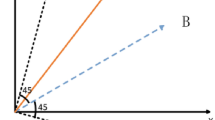Abstract
Aiming at the problem of underwater polarized laser scattering caused by underwater suspended particles, the equivalent spherical particle Mie scattering theory simulation method is used to study the polarization characteristics of underwater scattered light. The relationship between underwater suspended particle characteristics and optical characteristics is analyzed, and the effects of particle size, polarization characteristics of incident light, and angle of incidence on the degree of polarization of forward and backward scattering light are studied. The results show that: When the incident light is natural light, the degree of polarization of scattered light is very low at the forward-scattering angle, which increases with the increase of the scattering angle, but changes frequently with the increase of the particle size. When the incident light is linearly polarized, the degree of linear polarization of the scattered light is related to the azimuth Angle. The degree of circular polarization is largely unaffected by particle size.
Similar content being viewed by others
References
G. Zaccanti, P. Bruscaglioni, M. Gurioli and P. Sansoni, Applied Optics 32, 1590 (1993).
S. Zhang, J. T. Zhan, S. K. Bai, Q. Fu, J. Duan and H. L. Jiang, Acta Optica Sinica 36, 0729001 (2016). (in Chinese)
O. K. Steinvall, Proceedings of SPIE — The International Society for Optical Engineering 32, 1307 (1992).
H. H. He, N. Zeng, R. Liao and H. Ma, Progress in Biochemistry and Biophysics 42, 419 (2015). (in Chinese)
R. M. Lerner and J. D. Summers, Applied Optics 21, 861 (1982).
Q. Duntley, Journal of the Optical Society of America 53, 214 (1963).
G. C. Wang, S. F. Dong, D. Wen and M. Qiao, Electronic Technology 47, 68 (2010). (in Chinese)
K. Ding, Y. W. Huang, W. Q. Jin, K. J. Jin and H. L. Li, Infrared Technology 35, 467 (2013). (in Chinese)
J. E. Hansen, Journal of Atmospheric Sciences 28, 120 (1971).
J. E. Hansen and L. D. Travis, Space Science Reviews 16, 527 (1974).
I. W. Sudiarta and P. Chylek, Journal of the Optical Society of America A 18, 1275 (2001).
L. Ma, F. Duan, G. Song and L. Zhao, Measurement 117, 125 (2018).
A. Ishimaru, S. Jaruwatanadilok and Y. Kuga, Applied Oprics 40, 5495 (2001).
P. Sun, Y. Ma, W. Liu, C. Xu and X. Sun, Journal of Optics 15, 055708 (2013).
S. K. Sahu and P. Shanmugam, Optics Express 23, 22291 (2015).
Y. Guo, Y. Wang, F. Jin and G. Li, Water Tank Experiments for Laser Backward-Scattering Properties of Bubble Cluster, IEEE/OES China Ocean Acoustics (COA), 2016.
Author information
Authors and Affiliations
Corresponding author
Additional information
This work has been supported by the National Natural Science Foundation of China (No.61404362).
Rights and permissions
About this article
Cite this article
Cheng, Q., Wang, Ym. & Zhang, Yl. Analysis of the polarization characteristics of scattered light of underwater suspended particles based on Mie theory. Optoelectron. Lett. 17, 252–256 (2021). https://doi.org/10.1007/s11801-021-0039-0
Received:
Revised:
Published:
Issue Date:
DOI: https://doi.org/10.1007/s11801-021-0039-0




